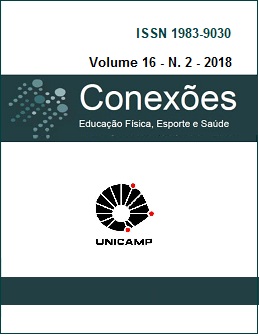Abstract
Studies carried out indicate that people with disabilities face several obstacles to the practice of
physical activity, where the absence of adequate programs their needs act as the main point. The
present study aims to analyze the offer and involvement of people with disabilities in swimming
programs, identifying and characterizing the types of existing programs. The work has descriptivequantitative character with application of closed questionnaire in places that offer swimming programs
in the cities of Limeira, Jundiaí, Itu and Campinas. 62 places of practice of the sports modality
accredited to the Regional Council of Physical Education were selected and contacted by telephone.
The applied questionnaire had as objective to identify places that offered the modality for students
with deficiency, as well as characterization of the programs. As a result, 52% of the institutions did not
attend disabled students in their programs. The availability of practice sites is still a major obstacle for
the involvement of this population with the practice of the modality.
References
BODDE, Amy E.; SEO, Dong-Chul. A review of social and environmental barriers to physical activity for adults with intellectual disabilities. Disability and Health Journal, v. 2, n. 2, p. 57-66, 2009. Disponível em: https://www.sciencedirect.com/science/article/pii/S193665740800160X?via%3Dihub.
BREDARIOL, Bruna; ALMEIDA, José Júlio Gavião de. Acessibilidade de pessoas deficientes visuais à prática da natação – uma revisão da literatura. Conexões, v. 10, n. 2, p. 196-213, 2012. Disponível em: https://periodicos.sbu.unicamp.br/ojs/index.php/conexoes/article/view/8637682.
CARDINAL, Bradley J. et al. Historical context and current status of the intersection of physical activity and public health: Results of the 2015 American Kinesiology Association’s Opportunities for Kinesiology survey. Kinesiology Review, v. 4, n. 4, p. 329-345, 2015. Disponível em: https://journals.humankinetics.com/doi/abs/10.1123/kr.2015-0033?journalCode=krj.
COOPER, Rory A. et al. Research on physical activity and health among people with disabilities: a consensus statement. Journal of Rehabilitation Research & Development, v. 36, n. 2, p. 142-154, apr. 1999. Disponível em: https://www.rehab.research.va.gov/jour/99/36/2/cooper.pdf.
DURSTINE, J. Larry et al. Physical activity for the chronically ill and disabled. Sports Medicine, v. 30, n. 3, p. 207-219, sep. 2000. Disponível em: https://www.ncbi.nlm.nih.gov/pubmed/10999424.
ELLIS, Rebecca et al. Physical activity beliefs and behaviour of adults with physical disabilities. Disability and Rehabilitation, v. 29, n. 5, p. 1221-1227, 2007. Disponível em: https://www.ncbi.nlm.nih.gov/pubmed/17653996.
GRENIER, Michelle. Inclusion in Physical Education: From the Medical Model to Social Constructionism. Quest, v. 59, n. 3, p. 298-310, jan. 2007.
HELLER, Tamar; HSIEH, Kelly; RIMMER, James H. Attitudinal and psychosocial outcomes of a fitness and health education program on adults with down syndrome. American journal of mental retardation: AJMR, v. 109, n. 2, p. 175-185, mar. 2004. Disponível em: https://www.ncbi.nlm.nih.gov/pubmed/15000672.
JAARSMA, Eva A. et al. Barriers to and facilitators of sports participation for people with physical disabilities: a systematic review. Scandinavian Journal of Medicine and Science in Sports, v. 24, n. 6, p. 871-881, dec. 2014. Disponível em: https://www.ncbi.nlm.nih.gov/pubmed/24730752.
JUNKER, Linda; BROGRAN CARLBERG, Eva. Factors that affect exercise participation among people with physical disabilities. Advances in Physiotherapy, v. 13, p. 18-25, 2011.
LUI, Ka Chuen; HUI, Stanley S.C. Participation in and adherence to Physical Activity in People with Physical Disability. Hong kong Physiotherapy Journal, v. 27, n. 1, p. 30-38, 2009. Disponível em: https://www.sciencedirect.com/science/article/pii/S1013702510700063.
NAZAR, Paulo T. et al. O ensino na natação: utilização de tutores para treinos em atletas com deficiência física. Revista Eletrônica Debates em Educação Científica e Tecnológica, v. 6, n. 4, dez. 2016.
NOCE, Franco; SIMIM, Mário Antônio de Moura; MELLO, Marco Túlio de. A percepção de qualidade de vida de pessoas portadoras de deficiência física pode ser influenciada pela prática de atividade física? Revista Brasileira de Medicina do Esporte, v. 15, n. 3, p. 174-178, 2009. Disponível em: http://www.scielo.br/pdf/rbme/v15n3/a02v15n3.pdf.
RIMMER, James H. et al. Physical activity participation among persons with disabilities: barriers and facilitators. American Journal of Preventive Medicine, v. 26, n. 5, p. 419-25, jun. 2004. Disponível em: https://www.ncbi.nlm.nih.gov/pubmed/15165658.
RUDIO, Franz Victor. Introdução ao projeto de pesquisa cientifica. 36. ed. Petrópolis: Vozes, 2010.
SAN MARTIN, Juan Eduardo Samur; ALVES, Maria Luiza Tanure; DUARTE, Edison. Análise do Processo Inclusivo de Pessoas com Deficiência no Clube Esportivo: Um estudo de Caso. Revista Brasileira de Atividade Motora Adaptada, v. 13, n. 1, p. 31-36, 2012. Disponível em: www2.marilia.unesp.br/revistas/index.php/sobama/article/download/3606/2771.
SERON, Bruna Barboza; ARRUDA, Gustavo Aires de; GREGUOL, Márcia. Facilitadores e barreiras percebidas para a prática de atividade física por pessoas com deficiência motora. Revista Brasileira de Ciências do Esporte, v. 37, n. 3, p. 214-221, 2015. Disponível em: http://www.scielo.br/pdf/rbce/v37n3/0101-3289-rbce-37-03-0214.pdf.
STANISH, Heidi I. et al. Physical Activity Enjoyment, Perceived Barriers, and Beliefs Among Adolescents With and Without Intellectual Disabilities. Journal of Physical Activity and Health, v. 13, n. 1, p. 102-110, jan. 2016. Disponível em: https://www.ncbi.nlm.nih.gov/pmc/articles/PMC4591175/.
TORRI, Danielle; VAZ, Alexandre Fernandez. Esporte paralímpico: difícil inclusão, incorporação tecnológica, corpos competitivos. Práxis Educativa, v. 12, n. 2, p. 19-33, 2017. Disponível em: http://www.revistas2.uepg.br/index.php/praxiseducativa/article/view/8719.
VAN DER PLOEG, Hidde P. et al. Physical activity for people with a disability: a conceptual model. Sports Medicine, v. 34, n. 10, p. 639-649, feb. 2004. Disponível em: https://www.ncbi.nlm.nih.gov/pubmed/15335241.
The Conexões: Educação Física, Esporte e Saúde Journal uses the license of Creative Commons (CC), thus preserving the integrity of articles in an open access environment.


